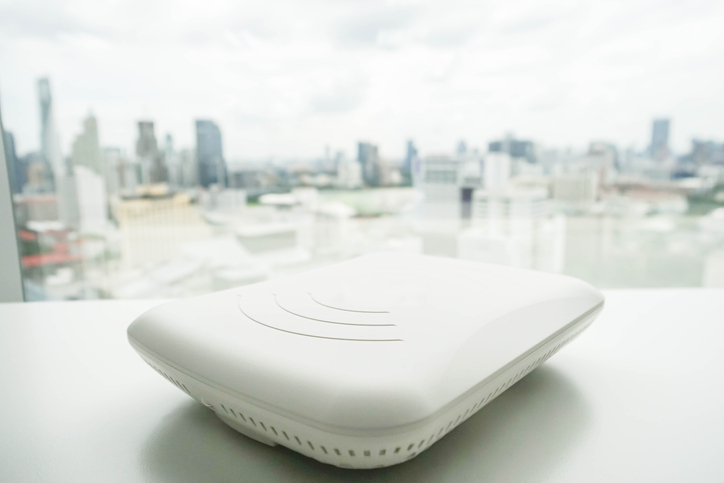
The Cisco Meraki CW917 series marks a significant advancement in enterprise wireless networking. As businesses shift toward Wi-Fi 7 for faster speeds, lower latency, and greater device density, Meraki’s new access points—CW9178I and CW9176I—are designed to meet the demand for scalable, high-performance wireless environments.
Choosing the right access point can directly impact user experience, security, and operational efficiency. Both models support Meraki’s signature cloud-based management, but they are built for slightly different deployment needs. In this article, we offer a thorough comparison between the CW9178I and CW9176I. We are here to help IT professionals and decision-makers determine which AP fits best based on technical specs, power consumption, use cases, and value.

The CW9178I is positioned as an ultra-high-performance indoor access point. With four 4×4 radios and an aggregate frame rate of up to 24 Gbps, it’s optimized for ultra-dense environments like stadiums, conference halls, and high-capacity enterprise buildings. The device supports quad-radio mode for dual 5 GHz operation, enabling even greater channel capacity and performance flexibility.
On the other hand, the CW9176I is a high-performance tri-band AP with three 4×4 radios, offering a maximum frame rate of 18 Gbps. It includes an internal omnidirectional antenna and is ideal for large-scale indoor deployments such as offices, educational institutions, and healthcare environments. Both models integrate seamlessly into the Meraki ecosystem and support Cisco Catalyst Center for hybrid management.
Physically, the CW9178I is slightly larger and heavier, measuring 9.9 x 9.9 x 2.0 inches and weighing 4.1 lbs. The CW9176I comes in at 9.5 x 9.5 x 2.0 inches and 3.4 lbs. Both models include robust mounting kits and feature plenum-rated casings for ceiling installations.
When it comes to antennas, both APs use internal omnidirectional antennas. The CW9178I supports dual 5 GHz operation in quad-radio mode, giving it an edge in signal steering and channel density. Meanwhile, the CW9176I includes a software-defined flex radio, allowing for dual 5 GHz or tri-band operation depending on network needs.
These hardware differences influence deployment: choose CW9178I for dense, complex environments where traffic segmentation is vital; opt for CW9176I in standard enterprise deployments prioritizing cost efficiency and reliable coverage.
The CW9178I shines with its quad-radio setup—2.4 GHz, two 5 GHz radios, and 6 GHz—delivering up to 24 Gbps aggregate throughput. This setup is ideal for environments with thousands of concurrent connections, such as stadiums or large campuses.
The CW9176I, with its tri-radio configuration, offers a solid 18 Gbps maximum throughput. It supports simultaneous operations in 2.4 GHz, 5 GHz, and 6 GHz bands, making it suitable for enterprise-grade performance.
Both models feature 4×4:4 MU-MIMO, OFDMA, and support for 4096-QAM under 802.11be. The addition of Multi-Link Operation (MLO) ensures consistent performance across bands. While both APs support dense deployments, the CW9178I is tailored for high-traffic zones requiring superior channel bandwidth.

Security is robust across both models, with a layered approach that protects against a wide range of threats. Each access point supports WPA3 Enterprise, Enhanced Open (OWE), and WPA3-Suite B, ensuring modern encryption standards are enforced. In addition to integrated Layer 7 firewalls, both the CW9176I and CW9178I feature real-time WIDS/WIPS with Cisco Meraki’s Air Marshal, actively scanning for rogue access points, spoofing attempts, and anomalous behavior. This dedicated security radio allows for 24/7 threat monitoring without impacting client data throughput.
Administrators can also configure application-aware traffic shaping, define SSID-based policies, and enforce context-aware access control using Cisco ISE integration. PCI compliance tools and detailed audit logs make it easy to stay aligned with industry-specific security standards.
From a management perspective, Meraki’s cloud dashboard centralizes operations across all locations. IT teams can leverage Meraki Health for AI-driven anomaly detection and automated optimization. Meanwhile, Cisco Spaces adds location-based analytics and proximity engagement features, useful for retail and smart office environments. Whether deploying CW9176I or CW9178I, network admins benefit from seamless updates, remote diagnostics, and full-stack visibility—all within a single, intuitive interface.
Power requirements differ due to the radio architecture and performance profile of each model. The CW9178I, with its quad-radio design and dual 10G Ethernet ports, requires up to 47W for full functionality, especially when running USB peripherals. It is fully compliant with 802.3bt (UPOE) standards, which must be considered when choosing switches or PoE injectors. Without sufficient power, the device will default to reduced functionality, disabling some radios or operating in tri-radio mode.
The CW9176I has a slightly lower power ceiling, peaking at 39W with USB usage. It also supports 802.3bt, but can function with 802.3at (PoE+), albeit with reduced performance—typically operating in 2×2 mode across its radios and lowering link speeds. This makes it more flexible for environments with mixed or older network infrastructure.
Both models support LLDP and Cisco Discovery Protocol (CDP) for power negotiation, ensuring optimal performance when connected to compatible equipment. It’s essential to plan infrastructure accordingly—using compliant switches or certified PoE injectors like MA-INJ-6 or CW-INJ-8—to unlock the full capabilities of these access points.
The CW9178I is purpose-built for ultra-dense, mission-critical environments where wireless performance can’t afford compromise. Ideal for stadiums, convention centers, university campuses, and large healthcare facilities, this model thrives in places with high client density, bandwidth-heavy applications, and redundancy needs. Its dual 10G mGig Ethernet ports allow for link aggregation and failover, ensuring uninterrupted service even if one link fails.
In contrast, the CW9176I fits seamlessly into typical enterprise and institutional settings. It’s optimized for offices, K–12 schools, retail stores, and hospitals, where reliable, high-performance Wi-Fi is essential but extreme density isn’t a concern. With a balance of performance and efficiency, it also works well for branch offices or distributed enterprise locations that require robust connectivity without over-investing in top-tier hardware.
Ultimately, the choice comes down to environment demands: CW9178I is the powerhouse for wireless-intensive environments, while CW9176I is the agile performer for general enterprise deployments.
From a pricing perspective, the CW9178I sits at the premium end of Cisco Meraki’s Wi-Fi 7 lineup. Its quad-radio design, dual 10G Ethernet support, and 24 Gbps throughput justify the cost in high-demand settings. Organizations with performance-intensive workflows, such as real-time HD video conferencing, AR/VR platforms, or high-volume telemetry, will benefit from the investment through greater reliability and scalability.
On the other hand, the CW9176I offers substantial cost savings while still delivering tri-band Wi-Fi 7 performance and cloud-based management. It includes the same core Meraki dashboard features and supports enterprise-grade security protocols. For many businesses, this model hits the sweet spot between affordability and functionality—especially in deployments where extreme throughput isn’t essential.
When evaluating total cost of ownership (TCO), it’s important to consider not only the upfront hardware price but also PoE infrastructure, mounting complexity, and license tiers. For organizations looking to future-proof their wireless environments without overspending, CW9176I is a smart and scalable solution. But for those who demand peak performance, CW9178I is a long-term investment that pays dividends in uptime and user experience.
Here’s a quick spec-by-spec comparison of CW9178I vs CW9176I:
| Feature | CW9178I | CW9176I |
| Radios | Quad-Radio (Dual 5 GHz) | Tri-Radio (One 5 GHz) |
| Max Throughput | 24 Gbps | 18 Gbps |
| MU-MIMO/OFDMA Support | Yes (4×4:4) | Yes (4×4:4) |
| Power Requirement | 47W (802.3bt) | 39W (802.3bt) |
| Ethernet Ports | 2x 10G | 1x 10G |
| USB Port | Yes (9W) | Yes (9W) |
| Mounting Options | Ceiling/Wall/Desktop | Ceiling/Wall/Desktop |
| Dimensions (inches) | 9.9 x 9.9 x 2.0 | 9.5 x 9.5 x 2.0 |
| Weight | 4.1 lbs | 3.4 lbs |
| Ideal For | High-density, high-performance | General enterprise deployments |
Both the CW9178I and CW9176I are powerful, Wi-Fi 7-capable access points designed for next-gen enterprise networks. While CW9178I leads in throughput, dual-5GHz flexibility, and link redundancy, CW9176I balances performance and cost for broader deployment scenarios.
Whether you’re upgrading a school, modernizing office connectivity, or supporting thousands of stadium users, Cisco Meraki has you covered. For tailored recommendations, deployment planning, and procurement, reach out to Stratus Information Systems—your expert in Meraki wireless infrastructure.

Stay informed about our newest releases and updates